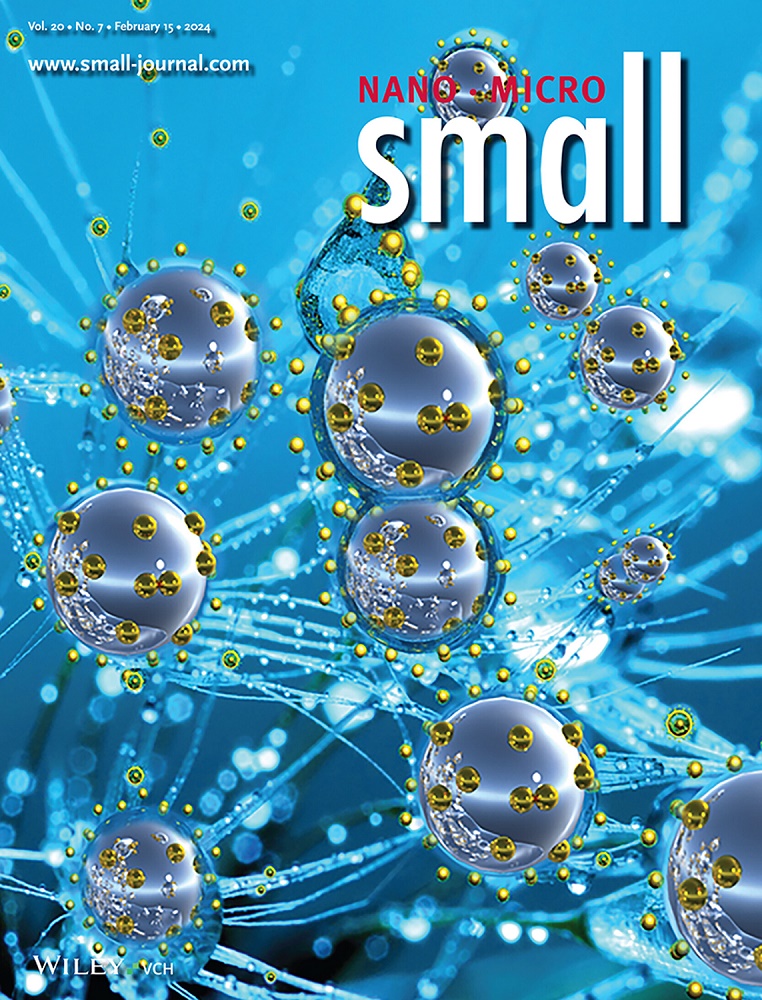Fundamental Understanding of "Fresh" Lithium Nucleation and Growth in Sulfide-Based Anode-Free Solid-State Batteries: Effects of Substrate, Current Density, and Li+ Supply.
IF 12.1
2区 材料科学
Q1 CHEMISTRY, MULTIDISCIPLINARY
引用次数: 0
Abstract
Understanding the electrochemical extraction and deposition of lithium (Li) from cathode is crucial for advancing anode-free solid-state batteries (AFSSBs). Herein, cryo-transmission electron microscopy (cryo-TEM) and electrochemical studies are employed to investigate how current collector surface properties, current densities, and cathode loadings influence the morphology of fresh electrochemically deposited Li and the electrochemical performance in sulfide-based AFSSBs. Cryo-TEM reveals that Cu current collectors induce irregular, dendritic Li deposits due to their lithiophobic nature and reactivity with Li5.4PS4.4Cl1.6 (LPSC), while Ni and Au facilitate more uniform, planar-like Li growth. The morphology of the deposited Li also depends on current density: higher rates produce smaller, porous particles versus larger, denser deposits at lower rates. Importantly, for the first time, we discovered that low cathode loadings lead to poor cycling stability due to insufficient Li+ supply for complete anode coverage, contrary to conventional solid-state batteries with preloaded Li metal anodes. This finding establishes a design principle where adequate cathode Li+ reservoirs are essential for anode interface stability in AFSSBs. Overall, this work elucidates the interplayed effect of current collectors, current densities, and cathode loadings on Li morphology and cycle stability, offering fundamental insights into cathode-derived Li behavior and practical guidelines for optimizing AFSSBs performance through nucleation control and interface engineering.对硫化物基无阳极固态电池中“新鲜”锂成核和生长的基本理解:衬底、电流密度和Li+供应的影响。
了解从阴极中提取和沉积锂的电化学过程对于推进无阳极固态电池(afssb)至关重要。本文采用低温透射电子显微镜(cro - tem)和电化学研究来研究集电极表面特性、电流密度和阴极负载如何影响新鲜电化学沉积锂的形貌和硫化物基afssb的电化学性能。低温透射电镜显示,Cu集流剂由于其疏锂性质和与Li5.4PS4.4Cl1.6 (LPSC)的反应性,诱导了不规则的枝状锂沉积,而Ni和Au则促进了更均匀的平面状锂生长。沉积的锂的形态也取决于电流密度:较高的速率产生较小的多孔颗粒,而较低的速率产生较大的致密沉积物。重要的是,我们首次发现,与具有预加载锂金属阳极的传统固态电池相反,低阴极负载会导致循环稳定性差,因为锂离子供应不足,无法完全覆盖阳极。这一发现建立了一个设计原则,即足够的阴极Li+储层对于afssb的阳极界面稳定性至关重要。总的来说,这项工作阐明了电流集电极、电流密度和阴极负载对锂形态和循环稳定性的相互作用,为阴极衍生的锂行为提供了基本的见解,并为通过成核控制和界面工程优化afssb性能提供了实用指南。
本文章由计算机程序翻译,如有差异,请以英文原文为准。
求助全文
约1分钟内获得全文
求助全文
来源期刊

Small
工程技术-材料科学:综合
CiteScore
17.70
自引率
3.80%
发文量
1830
审稿时长
2.1 months
期刊介绍:
Small serves as an exceptional platform for both experimental and theoretical studies in fundamental and applied interdisciplinary research at the nano- and microscale. The journal offers a compelling mix of peer-reviewed Research Articles, Reviews, Perspectives, and Comments.
With a remarkable 2022 Journal Impact Factor of 13.3 (Journal Citation Reports from Clarivate Analytics, 2023), Small remains among the top multidisciplinary journals, covering a wide range of topics at the interface of materials science, chemistry, physics, engineering, medicine, and biology.
Small's readership includes biochemists, biologists, biomedical scientists, chemists, engineers, information technologists, materials scientists, physicists, and theoreticians alike.
 求助内容:
求助内容: 应助结果提醒方式:
应助结果提醒方式:


